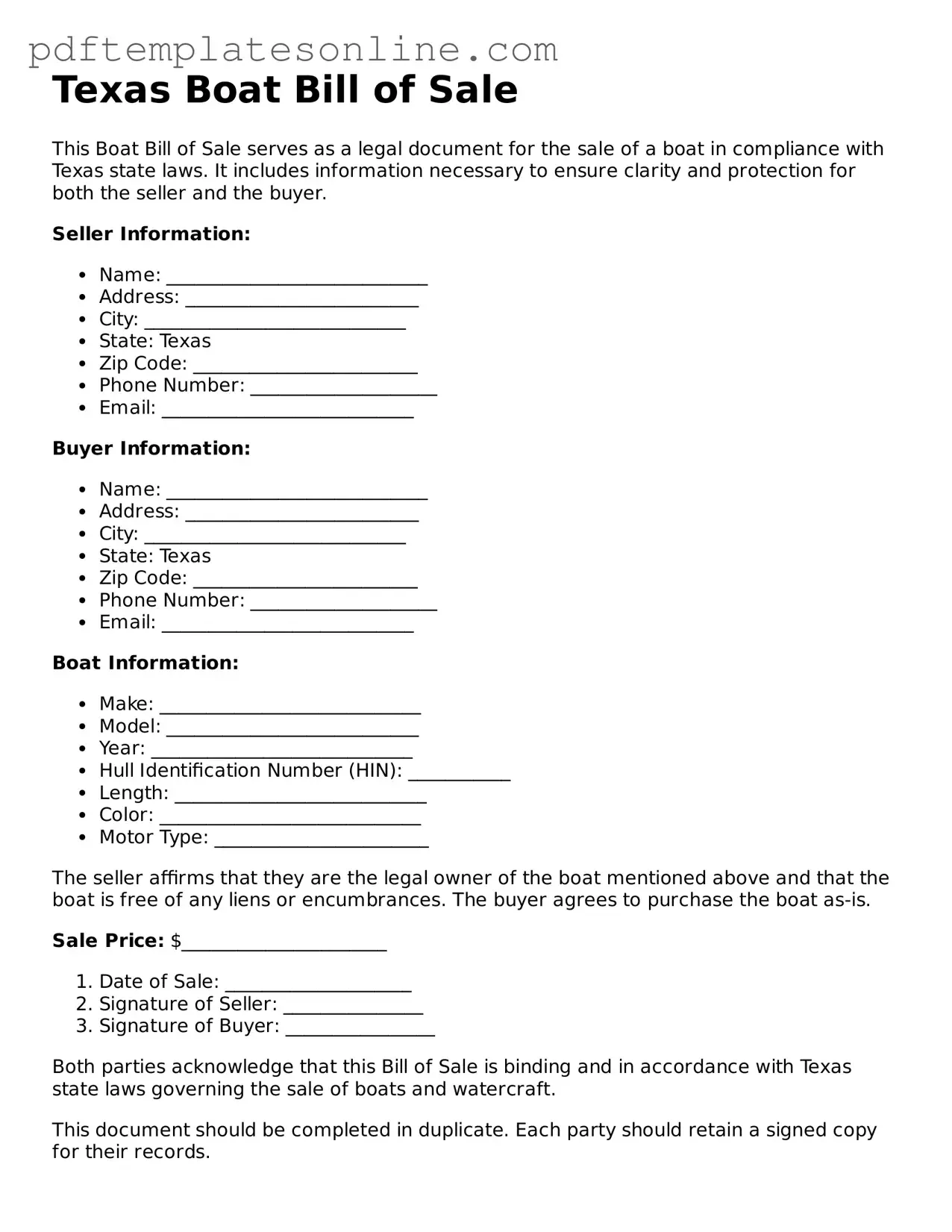Filling out the Texas Boat Bill of Sale form can seem straightforward, but many people make common mistakes that can lead to complications later. One frequent error is failing to include all required information. The form asks for specific details about the boat, such as the hull identification number, make, model, and year. Omitting any of this information can create issues during the registration process.
Another mistake is not providing accurate seller and buyer information. Ensure that names, addresses, and contact details are correct. Mismatched information can lead to confusion and may even delay the transfer of ownership.
Many individuals overlook the importance of signatures. Both the seller and buyer must sign the form. Without these signatures, the document is not legally binding. Additionally, some people forget to date the form, which is crucial for establishing the timeline of the sale.
Incorrectly calculating the sale price is another common error. The sale price must reflect the actual transaction amount. If the price is significantly lower than the market value, it may raise red flags with the Texas Parks and Wildlife Department.
Some sellers fail to provide a bill of sale copy to the buyer. Both parties should keep a copy for their records. This document serves as proof of the transaction and can be important for future reference.
People often neglect to check for any liens on the boat. If there is an outstanding loan or lien, the seller must address this before completing the sale. Ignoring this step can result in legal complications later on.
Another mistake is not ensuring that the boat is in good condition before the sale. Buyers expect to receive a vessel that matches the description provided in the bill of sale. Misrepresenting the condition can lead to disputes and dissatisfaction.
Some individuals forget to include any additional items that come with the boat, such as trailers or equipment. Listing these items in the bill of sale helps clarify what is included in the sale and avoids misunderstandings.
Finally, many people fail to familiarize themselves with Texas state laws regarding boat sales. Understanding the regulations can help avoid mistakes and ensure a smooth transaction. Taking the time to review the requirements can save headaches down the line.
